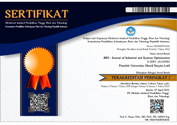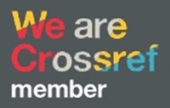PENDEKATAN METODE SIX SIGMA PADA PRODUK CACAT PT. LP
DOI:
https://doi.org/10.51804/jiso.v2i2.79-86Keywords:
Produk cacat, Konsep Six Sigma, DMAI, FMEAAbstract
Era globalisasi dan persaingan pasar yang semakin ketat, perusahaan dituntut untuk menghasilkan produk yang berkualitas agar sesuai dengan permintaan konsumen. Sebagai salah satu perusahaan flexible packaging PT. LP memiliki beberapa jenis produk yang diperkenalkan di kalangan masyarakat luas baik dalam maupun luar kota. Sebagai upaya dalam menurunkan produk cacat yang ada di PT. LP maka pada penelitian ini metode yang digunakan adalah pendekatan metode Six Sigma dengan konsep DMAI dan untuk menganalisis faktor kegagalan menggunakan FMEA. Metode kombinasi tersebut diharapkan dapat mengurangi jumlah produk cacat yang terjadi di PT. LP. Hasil pengolahan data didapatkan produk cacat tertinggi adalah missprint dengan nilai persentase 43,85%. Usulan perbaikan berdasarkan nilai RPN tertinggi dalam analisis FMEA.
References
Anjiu, L. D. (2011). Analisis Peningkatan Kualitas Proses Pengemasan Air Minum dalam Kemasan “For3” 240 ml dengan Menggunakan Pendekatan Metode Six Sigma dan FMEA (Studi Kasus: PT. Meteor Perkasa, Singkawang-Kalbar). Rekayasa, 4(2), 92–102.
Santoso, A. A., & Fudhla, A. F. (2019). PERBAIKAN SISTEM PRODUKSI KARDUS DENGAN PENDEKATAN LEAN DMAI DI PT KEDAWUNG CCB. JISO: Journal of Industrial and Systems Optimization, 1(1), 39–46.
Suhada, R. T., & Rachmat, D. R. (n.d.). Usulan Penerapan Metode Six Sigma dalam Upaya Menurunkan Tingkat Kecacatan Produk MJC1 195 ml di PY.
Tannady, H. (2015). Pengendalian Kualitas. Yogyakarta: Graha Ilmu.
Downloads
Published
Issue
Section
License
With the receipt of the article by JISO Editorial Board and the decision to be published, the copyright regarding the article will be transferred to JISO. The copyright transfer form can be downloaded here.
JISO has the right to multiply and distribute the article and every author is not allowed to publish the same article that was published in this journal.
JISO is licensed under a Creative Commons Attribution-ShareAlike 4.0 International License.
Under the following terms:
Attribution — You must give appropriate credit, provide a link to the license, and indicate if changes were made. You may do so in any reasonable manner, but not in any way that suggests the licensor endorses you or your use.
ShareAlike — If you remix, transform, or build upon the material, you must distribute your contributions under the same license as the original.














